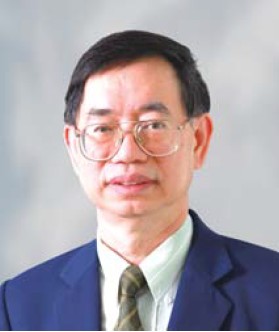Diagnosing Obstructive Sleep Apnea by Performing Fiberoptic Bronchoscopy and PEEP Titration of Mask Continuous Positive Airway Pressure
Main Article Content
Abstract
OBJECTIVE: This study was conducted to pioneer a new technique of diagnosingobstructive sleep apnea using fi beroptic bronchoscopy (FOB) and mask continuouspositive airway pressure (CPAP), supported by sleep questionnaires and a portablesleep study procedure.
MATERIALS AND METHODS: Ten patients suspected of obstructive sleep apnea(OSA) who needed to undergo FOB for other reasons aside from sleep apnea werediagnosed with OSA by using FOB and CPAP.
RESULTS: From the sleep study, the mean apnea-hypopnea index (AHI) was 21events per hour. All the patients had been using CPAP, and tolerated how the machineoperates. Nobody reported any diffi culty during the follow-up checkup.
CONCLUSION: This new technique is not only practical, cost-effi cient, time-savingand benefi cial for both patient and physician but it may also be considered as the newgold standard in diagnosing OSA.
Article Details
This is an open access article distributed under the terms of the Creative Commons Attribution Licence, which permits unrestricted use, distribution, and reproduction in any medium, provided the original work is properly cited.
References
2. Johal A, Battagel JM, Kotecha BT. Sleep nasendos- copy: a diagnostic tool for predicting treatment success with mandibular advancement splints inobstructive sleep apnoea. Eur J Orthod 2005;27:607-14.
3. McNicholas WT. Diagnosis of Obstructive Sleep Apnea in Adults. Proc Am Thorac Soc 2008:5:154-60.
4. Lavie P, Herer P, Hoffstein V. Obstructive sleep apnoea syndrome as a risk factor for hypertension: population study. BMJ 2000;320:479-82.
5. Shahar E, Whitney WC, Redline S, et al Sleep-disordered breathing and cardiovascular disease: cross-sectional results of the Sleep Heart Health Study. Am J Respirw Crit Care Med 2001;163:19-25.
6. Ip MS, Lam B, Ng MM, et al. Obstructive sleep apnea is independently associated with insulin resistance. Am J Respir Crit Care Med 2002;165:670-6.
7. Powell NB, Schechtman KB, Riley RW, et al. Sleepy driving: accidents and injury. Otolaryngol Head Neck Surg 2002;126:217-27.
8. Qaseem A, Dallas P, Owens DK, et al. Diagnosis of obstructive sleep apnea in adults: a clinical practice guideline from the American College of Physicians. Ann Intern Med 2014;161:210-20.
9. DE Corso E, Fiorita A, Rizzotto G, et al. The role of drug-induced sleep endoscopy in the diagnosis and management of obstructive sleep apnoea syndrome: our personal experience. Acta Otorhinolaryngol Ital 2013; 33:405-13.
10. Flemons WW, Douglas NJ, Kuna ST, et al. Access to diagnosis and treatment of patients with suspected sleep apnea. Am J Respir Crit Care Med 2004;169:668-72.
11. Zancanella E, Haddad FM, Oliveira LAMP et al. Obstructive sleep apnea and primary snoring: diagnosis. Braz J Otorhinolaryngol 2014; 80 (Sup1):S1-S16.
12. Su S, Baroody FM, Kohrman M, et al. A comparison of polysomnography and a portable home sleep study in the diagnosis ofobstructive sleep apnea syndrome. Otolaryngol Head Neck Surg 2004;131:844-50.
13. Hohenhorst W, Ravesloot MJL, Kezirian EJ, et al. Drug-induced sleep endoscopy in adults with sleep- disordered breathing: Technique and the VOTE Classifi- cation system. Oper Tech Otolaryngol 2012:23:11-8.

